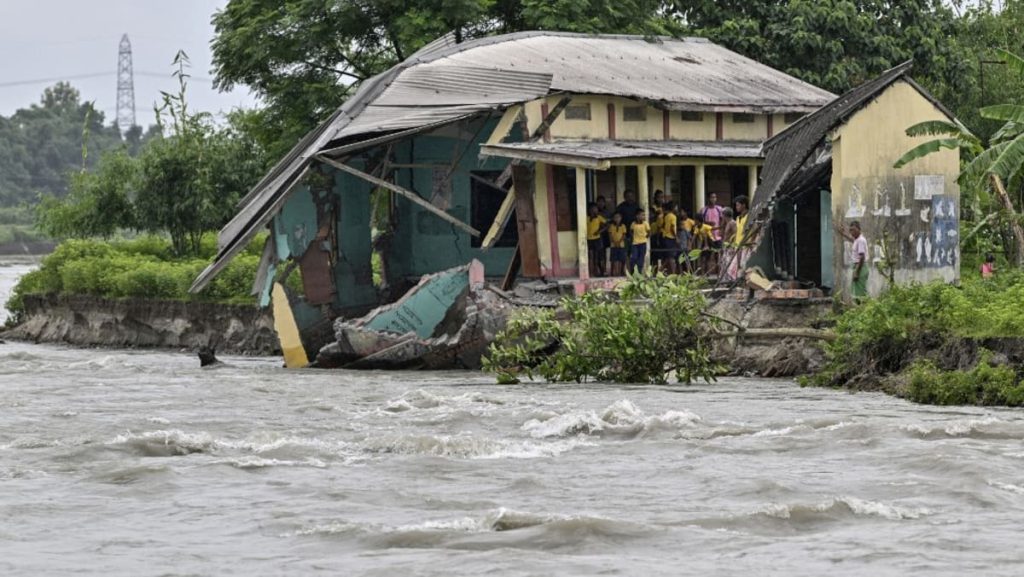Torrential storms in India and Nepal have resulted in hundreds of deaths since June due to flooding and landslides caused by the monsoon season. The toll includes scores in India and at least 171 in Nepal. While weather-related disasters during the monsoon season are not uncommon, experts believe that climate change is making them more frequent and severe. Just after experiencing a record-breaking heatwave in May and June, India is now facing ferocious rainstorms that are causing significant flooding and landslides.
The devastating heatwave earlier in the year saw New Delhi experiencing its highest temperature ever recorded, matching the previous record of 49.2 degrees Celsius. However, the scorching heat has now been replaced by heavy rainfall across the country. India’s weather department recently issued warnings of heavy rainfall in the south and northeastern states. In one incident in Himachal Pradesh state, nine people drowned when a surge of water swept through the Una district. Rescue teams are still searching for two missing individuals, with witnesses recounting how a car was swept away by the powerful current of the river despite efforts to stop it.
The combination of the intense heatwave earlier in the year and the current heavy rainfall highlights the extreme weather conditions faced by India. This abrupt shift from extreme heat to torrential rains has had devastating consequences, leading to loss of life and widespread destruction. The impact of these weather events is exacerbated by the country’s vulnerabilities to such disasters, with infrastructure and preparedness often insufficient to cope with the scale of the devastation. The situation is further compounded by the effects of climate change, which are making extreme weather events more frequent and severe.
In Nepal, the monsoon rains have also taken a heavy toll, with at least 171 people reported dead due to flooding and landslides. The country, like India, is no stranger to monsoon-related disasters, but the heightened frequency and severity of such events are raising concerns among experts. Climate change is believed to be a significant factor contributing to the increased intensity of these weather-related disasters, highlighting the urgent need for mitigation and adaptation measures to address the changing climate patterns. The vulnerabilities of both India and Nepal to extreme weather events underscore the importance of enhancing resilience and preparedness at the national and regional levels.
As the monsoon season continues to unleash its fury, the risks of further flooding, landslides, and devastation remain high in both India and Nepal. The need for timely and effective response measures, along with long-term strategies to mitigate the impact of climate change, is paramount. Efforts to improve disaster preparedness, enhance infrastructure resilience, and strengthen early warning systems are crucial in safeguarding lives and livelihoods in the face of increasingly unpredictable and extreme weather events. The recent disasters serve as a stark reminder of the urgent need for climate action at both the national and global levels to address the growing threat of climate change and its impact on vulnerable communities.















